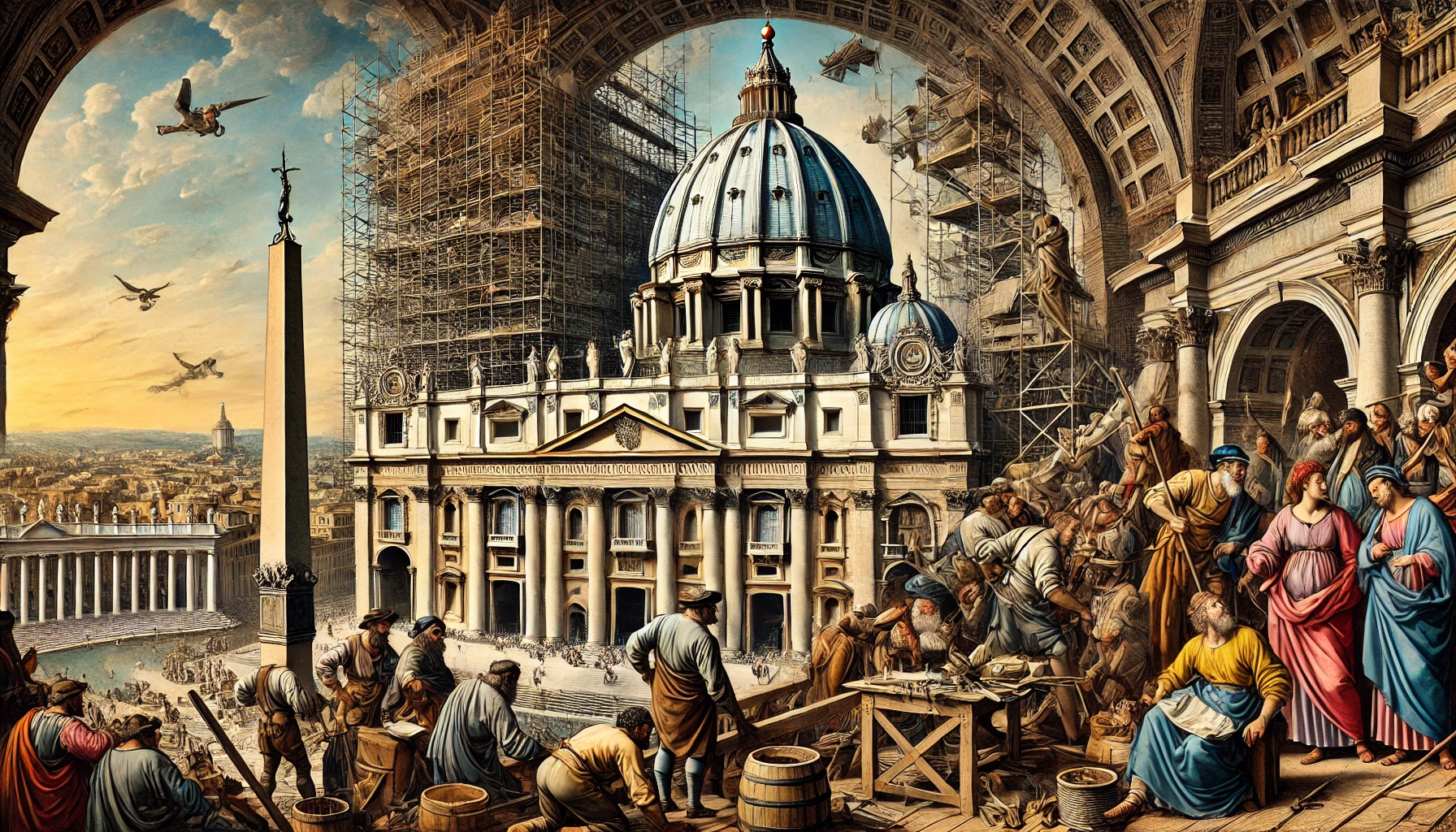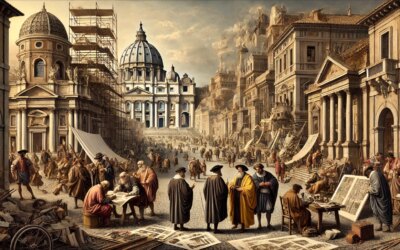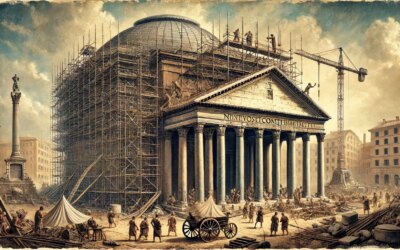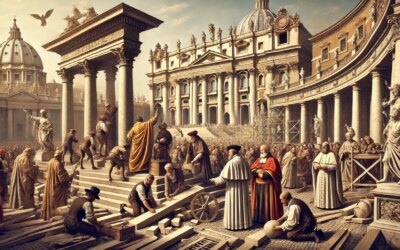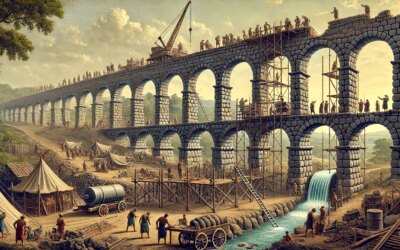A Vision of Grandeur
In the early 16th century, the Catholic Church embarked on one of the most ambitious architectural projects in history: the construction of St. Peter’s Basilica. Designed to replace the aging 4th-century basilica built by Emperor Constantine, this new structure would become the heart of the Vatican and a symbol of Renaissance artistry and faith.
Pope Julius II’s Grand Plan
The project was initiated by Pope Julius II in 1506. Determined to create a church worthy of St. Peter, he commissioned the most brilliant architects of the time, starting with Donato Bramante. Bramante’s original design featured a vast Greek cross layout and a magnificent dome inspired by the Pantheon.
Michelangelo’s Genius
After Bramante’s death, several architects, including Raphael and Antonio da Sangallo the Younger, modified the plans. However, it was Michelangelo, appointed in 1547, who gave the basilica its defining elements. He redesigned the dome, making it the largest in the world at the time. His vision, later completed by Giacomo della Porta, remains one of the most iconic aspects of St. Peter’s.
Challenges and Triumphs
The construction faced numerous setbacks, from financial struggles to engineering challenges. The funding of the basilica even led to the controversial sale of indulgences, a key factor in Martin Luther’s Reformation. Despite these difficulties, work continued for over a century, with contributions from Bernini, who designed the grand St. Peter’s Square.
A Monument to Faith and Art
St. Peter’s Basilica was finally consecrated in 1626 under Pope Urban VIII. Its breathtaking interior, adorned with sculptures like Michelangelo’s Pietà and Bernini’s Baldachin, remains a masterpiece of religious and artistic expression.
More than just a church, St. Peter’s Basilica stands as a testament to human ambition, artistic excellence, and the enduring power of faith.

